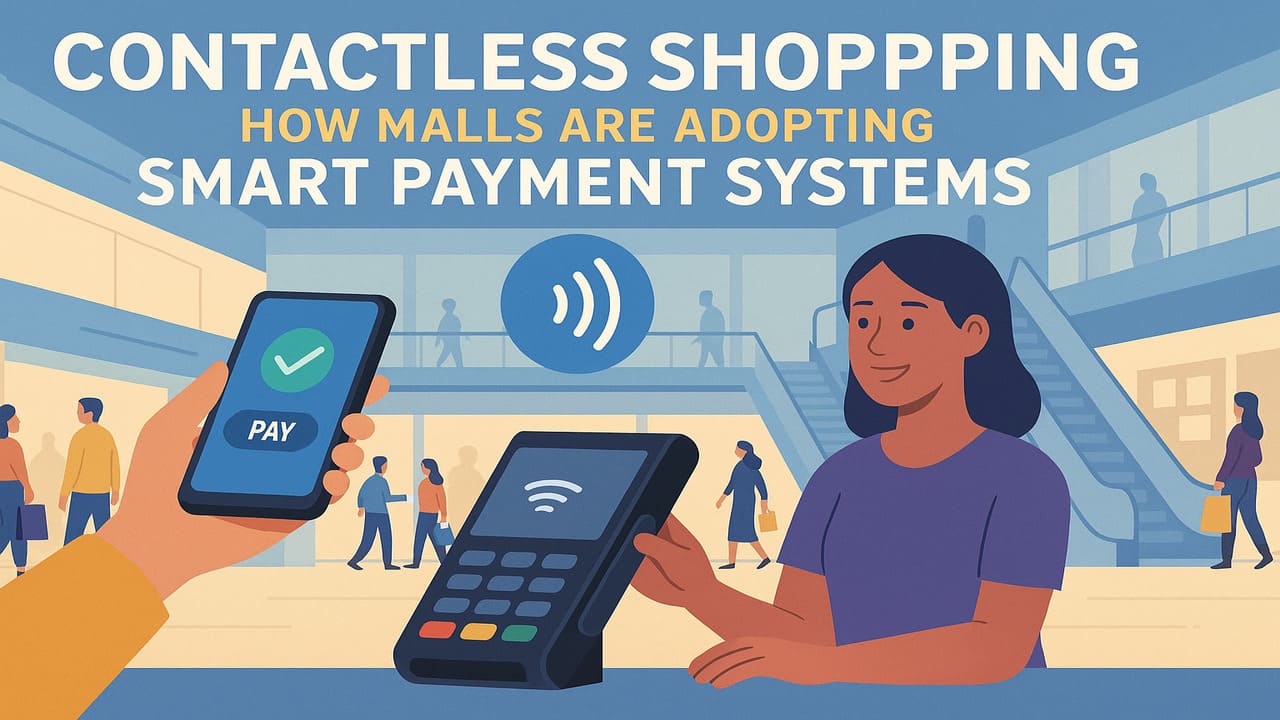
The Berkshire Mall – In recent years, the retail industry has experienced a major transformation, with malls at the forefront of this change. As consumers seek greater convenience, speed, and hygiene in their shopping experiences, malls have increasingly turned to contactless shopping solutions. This approach allows customers to make purchases without physically handling cash or swiping cards, offering a seamless and modern alternative.
The COVID-19 pandemic accelerated this shift, as health concerns made people more cautious about handling money or touching surfaces in public. What began as a temporary measure quickly became a lasting consumer expectation. Today, contactless shopping is no longer just a trend—it is a standard that malls around the world are adopting to stay competitive and relevant in the evolving retail landscape.
At the heart of contactless shopping are smart payment systems. These include technologies like NFC (Near Field Communication) payments, mobile wallets such as Apple Pay and Google Pay, and QR code-based payment solutions. With a quick tap or scan, customers can complete their transactions instantly, often with stronger layers of security than traditional card swipes.
Malls have embraced these systems not only to make shopping faster but also to attract tech-savvy consumers who expect digital convenience. Smart payments also benefit retailers by reducing transaction times, lowering the risk of fraud, and streamlining the overall checkout process. The combination of efficiency and safety makes these systems a win-win for both shoppers and businesses.
Also Read : Immersive Shopping: Virtual Reality and AR Experiences Inside Modern Malls
Malls that integrate contactless solutions see multiple benefits beyond customer satisfaction. First, it encourages higher spending. Shoppers are more likely to make impulse purchases when the payment process feels effortless and smooth. Second, it reduces operational challenges, as digital payments minimize the need for handling large volumes of cash.
Additionally, malls that adopt smart systems can gather valuable insights through data analytics. Payment apps often provide retailers with anonymized data on consumer preferences, spending patterns, and peak shopping hours. This allows mall operators to tailor promotions, optimize store layouts, and create targeted marketing campaigns that resonate more deeply with their audience.
Around the globe, malls are experimenting with innovative ways to integrate contactless shopping into their ecosystems. Some malls in Asia and the Middle East have introduced facial recognition payment systems, where customers can authorize purchases with a simple glance. In the United States, several malls now offer contactless parking solutions, allowing drivers to enter, pay, and exit without needing a ticket or cash.
Food courts, too, are embracing digital upgrades. With the help of mobile ordering apps, shoppers can place and pay for meals in advance, reducing wait times and eliminating the need to handle menus or cash. These practical innovations highlight how contactless technology extends far beyond retail stores, becoming a central feature of the entire mall experience.
Despite the benefits, adopting smart payment systems comes with challenges. Not all consumers are quick to embrace new technology particularly older shoppers who are more comfortable with traditional payment methods. Malls must invest in education and user-friendly systems to ensure that everyone can participate.
Security is another major concern. While contactless shopping payments are generally secure, cyber threats and data breaches remain a risk. Retailers must continuously upgrade their systems to maintain trust. Additionally, the cost of installing and maintaining advanced payment infrastructure can be high, posing a barrier for smaller retailers within a mall. These hurdles highlight the importance of balanced adoption strategies that consider both innovation and inclusivity.
Read More : From BBQ to Mac & Cheese: Kansas City Chiefs Foods That Will Blow Your Mind!
Rather than ending with a conclusion, it is valuable to consider what lies ahead for contactless shopping. The next phase will likely involve integration with emerging technologies such as blockchain, biometric verification, and AI-powered personalization. Imagine a future where shoppers can walk into a store, pick up items, and leave while sensors automatically charge their accounts without the need for checkout lines.
Malls that embrace these innovations will not only enhance the consumer experience but also redefine their role as community hubs. As the boundaries between digital and physical retail continue to blur, smart payment systems will serve as the bridge connecting convenience, security, and innovation in modern shopping centers.